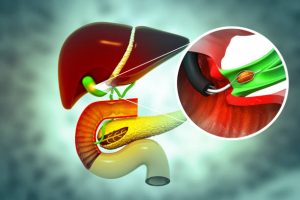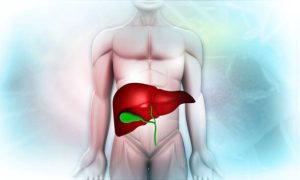
Young woman suffering from toothache
A toothache refers to pain in or around a tooth, usually caused by dental conditions or oral infections. The pain may be mild or severe and can impact daily activities like eating, speaking, and sleeping. Toothaches are often a sign of an underlying issue that requires attention.
Causes:
- Tooth Decay (Cavities): The most common cause of toothaches, tooth decay occurs when plaque erodes the enamel, causing a cavity to form.
- Gum Disease (Gingivitis or Periodontitis): Inflammation or infection of the gums can lead to pain around the tooth and may eventually affect the tooth itself.
- Tooth Abscess: A bacterial infection at the root of a tooth or in the gums, leading to severe pain, swelling, and sometimes fever.
- Tooth Fracture: A cracked or broken tooth can expose the inner layers, causing sensitivity and pain.
- Loose or Damaged Fillings: A damaged or dislodged filling can expose sensitive parts of the tooth, leading to discomfort.
- Eruption of Wisdom Teeth: The growth of wisdom teeth can cause pain if they become impacted or press on other teeth.
- Temporomandibular Joint (TMJ) Disorders: Jaw problems can cause referred pain that feels like a toothache.
- Sinus Infections: Sinusitis can cause toothache-like pain in the upper molars, as the sinuses are located close to the roots of these teeth.
- Teeth Grinding (Bruxism): Grinding or clenching teeth, often during sleep, can wear down teeth and cause pain.
- Exposure to Cold or Heat: Teeth with weakened enamel or sensitivity may react to hot or cold foods and drinks.
Risk Factors:
- Poor Oral Hygiene: Lack of regular brushing and flossing can lead to plaque buildup, cavities, and gum disease.
- Diet: Consuming sugary or acidic foods and drinks can increase the risk of tooth decay.
- Tobacco Use: Smoking or using other tobacco products can contribute to gum disease and tooth decay.
- Dry Mouth: Reduced saliva flow (from medications or conditions) can increase the risk of tooth decay.
- Dental Work: Recent dental procedures may cause temporary sensitivity or pain.
- Age: Older adults may be more prone to gum disease, tooth decay, or wear and tear on teeth.
Symptoms:
- Sharp or Throbbing Pain: Pain may be intermittent or constant, and can worsen with chewing or biting.
- Swelling Around the Tooth: Swelling of the gums or face may accompany the toothache, especially in cases of infection.
- Sensitivity to Temperature: Discomfort or pain when eating or drinking hot, cold, or sweet foods.
- Bad Breath or Taste: A foul taste in the mouth or persistent bad breath may indicate infection or abscess.
- Fever or Headache: In more severe cases, fever or headache may occur, especially if there’s an infection.
- Red, Inflamed Gums: Gum inflammation or bleeding may accompany the pain, especially in cases of gum disease.
Prevention:
- Good Oral Hygiene: Brush teeth twice a day with fluoride toothpaste, and floss daily to remove plaque.
- Regular Dental Check-ups: Visit the dentist at least twice a year for cleanings and examinations.
- Balanced Diet: Limit sugary and acidic foods, and eat a diet rich in calcium, phosphorus, and other tooth-healthy nutrients.
- Use of Fluoride: Incorporate fluoride into your dental routine to strengthen teeth and prevent decay.
- Avoid Tobacco: Smoking or using tobacco products increases the risk of gum disease and oral health issues.
- Mouthguards for Teeth Grinding: If you grind your teeth, a mouthguard can protect your teeth and alleviate stress on your jaw.
Diagnosis:
- Dental Examination: The dentist will perform a thorough exam, checking for visible signs of decay, infection, or damage.
- X-rays: Dental X-rays can help identify hidden problems such as cavities, abscesses, or impacted teeth.
- Percussion Testing: The dentist may tap on the tooth to see if pain is elicited, which can indicate infection or inflammation.
- Thermal Testing: Exposing the tooth to cold or heat can help determine if it is sensitive due to decay or nerve damage.
Home Remedies:
- Salt Water Rinse: Rinse your mouth with warm salt water to reduce inflammation and clean the affected area.
- Cold Compress: Apply a cold compress to the outside of the cheek to reduce swelling and numb the pain.
- Over-the-Counter Pain Relief: Take ibuprofen or acetaminophen to relieve pain and inflammation.
- Clove Oil: Clove oil contains eugenol, a natural anesthetic, and can be applied to the painful area for relief.
- Garlic: Crush a garlic clove and apply it to the tooth; garlic has natural antibacterial properties.
- Peppermint Tea Bags: Applying a cooled peppermint tea bag to the painful area can soothe irritated gums.
- Hydrogen Peroxide Rinse: Dilute hydrogen peroxide with water and rinse your mouth to reduce bacterial growth and relieve discomfort.
Treatment:
- Fillings or Crowns: Cavities or cracks in the tooth may be treated with a filling or crown to restore the tooth’s structure.
- Root Canal Treatment: If the tooth’s nerve is infected or damaged, a root canal may be performed to remove the infection and save the tooth.
- Tooth Extraction: In cases where the tooth is too damaged or infected to be saved, extraction may be necessary.
- Antibiotics: If the toothache is caused by an infection, antibiotics may be prescribed to clear the infection.
- Desensitizing Treatments: For sensitive teeth, the dentist may apply a fluoride varnish or recommend desensitizing toothpaste.
Precautions:
- Avoid Hard or Sticky Foods: These can aggravate the toothache or cause more damage to the tooth.
- Be Gentle with Brushing: Use a soft-bristled toothbrush and brush gently around the affected area to avoid further irritation.
- Avoid Hot or Cold Foods: These can trigger sensitivity in a damaged tooth.
- Do Not Ignore Persistent Pain: Toothaches that last more than a day or two should be evaluated by a dentist to avoid complications like infection or abscess.
Self-Care:
- Maintain Proper Oral Hygiene: Continue brushing and flossing, but be gentle around the affected tooth.
- Use Pain Relievers: Take over-the-counter pain relievers as needed, following dosage instructions carefully.
- Stay Hydrated: Drink water frequently to keep the mouth clean and hydrated, and avoid sugary drinks.
- Rest: Ensure you’re getting enough rest and try to avoid clenching or grinding your teeth, especially if you’re in pain.
Disclaimer:
Toothache can be a sign of serious dental issues like infection, abscess, or severe decay. While home remedies can temporarily relieve pain, they do not address the underlying cause. Always consult a dentist for proper diagnosis and treatment. Ignoring a toothache or delaying professional care can lead to complications, including tooth loss, infection, or spread of the infection to other areas of the body.








